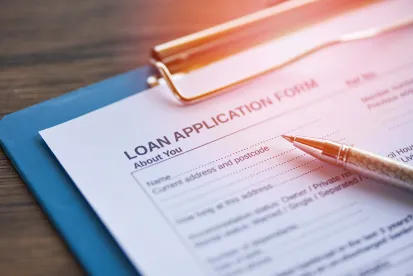Certain foreign-owned or controlled U.S. businesses are eligible to apply for potentially forgivable loans under the second round of the Paycheck Protection Program ("PPP") included in the recently enacted Economic Aid to Hard-Hit Small Businesses, Nonprofits, and Venues Act (P.L. 116-260). Applications can be submitted until March 31, 2021. The U.S. Small Business Administration ("SBA") and the Department of Treasury recently issued two interim final rules ("IFRs") which describe the eligibility requirements under which foreign-owned or controlled U.S. applicants can apply for first-time PPP loans as well as for "second draw" funding for applicants previously receiving PPP loans.
Size Eligibility Requirements
As was the case in the first round of PPP loans, eligibility for second round PPP loans is based on the SBA's "affiliation counting rules." Accordingly, the U.S. applicant must include not only its U.S. employees, but also all employees of the U.S. applicant's domestic and foreign affiliates. Moreover, the size eligibility rules depend on whether the applicant is applying for a first-time PPP loan or a "second draw" PPP loan.
For applicants seeking first-time PPP loans, the total number of the foreign and domestic employees of the U.S. applicant and its foreign and domestic affiliates cannot exceed 500, unless the applicant meets an applicable alternative SBA applicable revenue-based industry standard size requirement. Under SBA's alternative size standard applicable for the first round funding, a business concern may qualify as a small business concern if it, together with any affiliates: (1) has a maximum tangible net worth of not more than $15 million; and (2) the average net income after federal income taxes (excluding any carry-over losses) for the two full fiscal years before the date of application is not more than $5 million.
For "second draw" PPP funding, the total number of foreign and domestic employees of the U.S. applicant and its affiliates cannot exceed 300. The alternate size standard is not available for "second draw" funding.
There are possible waivers from these requirements for certain types of businesses, such as franchises operating in multiple locations.
The SBA has previously promulgated rules setting forth four tests, generally based on the actual or potential control one entity has over the other, to determine which entities qualify as an applicant's "affiliate." "Control" is based on actual or potential ownership or voting rights, management control and identity of interest.
Other Foreign Control Eligibility Requirements
Notwithstanding any other eligibility requirements, a U.S. entity is not eligible to receive a second draw PPP loan if any of the following conditions exist:
-
An entity created in or organized under the laws of the People's Republic of China or Hong Kong, or an entity that has significant operations in the People's Republic of China or Hong Kong, owns or holds at least 20% of the U.S. entity, directly or indirectly, (including as equity shares or a capital or profit interest in an LLC or partnership); or
-
The U.S. entity retains as a member of the board of directors a person who is a resident of the People's Republic of China; or
-
the U.S. entity is primarily engaged in political or lobbying activities.
Other Details
The IFRs set forth other requirements and details applicable for first-time and second-draw PPP borrowers. For instance, borrowers may receive a loan amount of up to 2.5 times their average monthly payroll costs (with a cap per employee of $100,000 annualized) in 2019, 2020, or the year prior to the loan. Of note, PPP borrowers with NAICS codes starting with 72 (such as hotels and restaurants) can receive up to 3.5 times their average monthly payroll costs on second-draw loans.
The maximum for a first-time PPP loan is $10 million, while the maximum for a second-draw PPP loan is $2 million. Of special note, applicable to each "second draw" borrower (but not to first-time borrowers) are some additional criteria, most notably: (i) it must have used the full amount of its first PPP loan on or before the expected disbursement date for the second draw PPP loan, (ii) it must have spent the full amount of the first PPP loan on eligible expenses, and (iii) it must have experienced a gross revenue reduction of 25% or more in the 2020 calendar year or any calendar quarter of 2020 compared with the same period in 2019.





 />i
/>i

